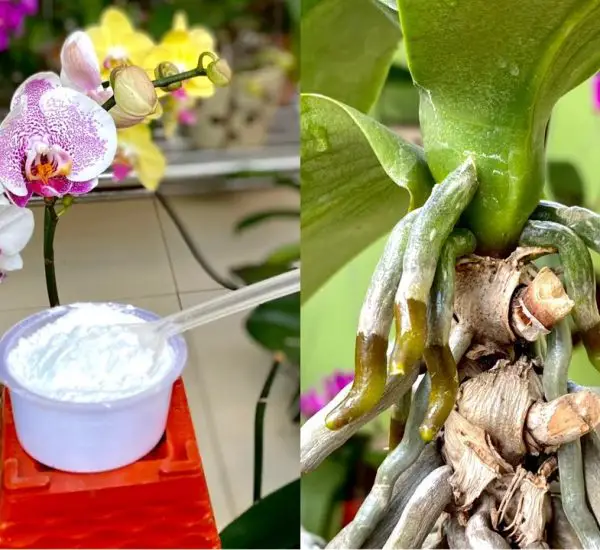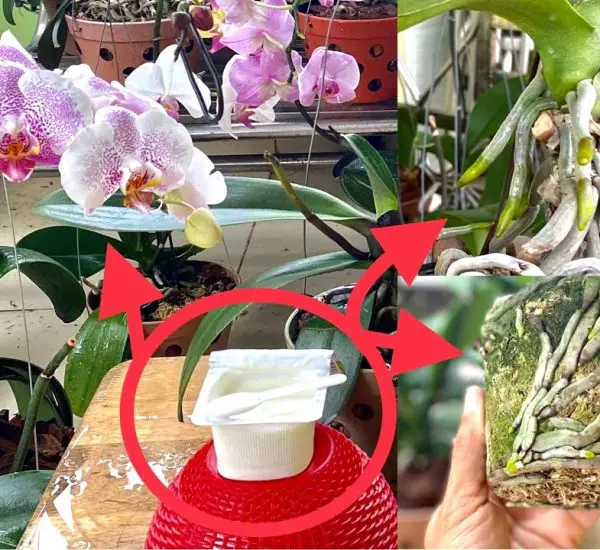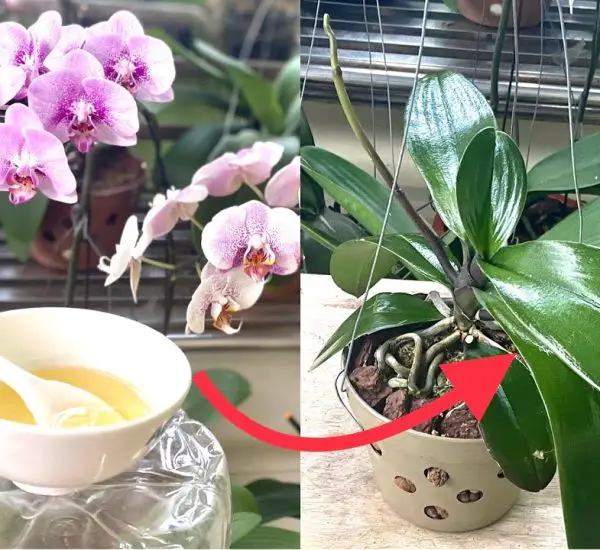1. Identifying and Isolating Rotten Orchids
When dealing with wilted orchids with dried roots and withered flower branches, it’s crucial to recognize the urgency of isolating these plants from the healthy ones. Bacteria and fungi can spread rapidly, posing a threat to other plants. The first step involves cutting off dry branches from the orchid carefully. By removing damaged roots and separating the affected orchid, you prevent the quick transmission of harmful microorganisms to other flower plants.
2. Thorough Cleaning and Initial Restoration Steps
After isolating the orchid, the next essential step is a thorough cleaning of the plant. Wash the orchid roots meticulously to remove any debris or contaminants. To initiate the restoration process, a crushed garlic clove mixed with 0.5 liters of room temperature water serves as a natural disinfectant. Soaking the orchid roots in this garlic water for 25 minutes aids in revitalizing the plant. Once the roots are immersed and treated, the orchid’s recovery journey begins.
3. Innovative Potting Technique with Garlic Water and Moss
Utilizing a creative potting technique enhances the orchid’s chances of quick recovery. Cut plastic bottles to create improvised pots, adding small pebbles to the base for drainage. Placing moss in the garlic water not only disinfects the growing medium but also creates a favorable environment for the orchid’s growth. The water level in the pot is carefully controlled to cover only a portion of the pebbles, ensuring a suitable level of moisture. Regular mist watering, every four days, and placing the orchid in a cool, dry location contribute to maintaining optimal conditions for recovery.
4. Swift Orchid Recovery and Ongoing Care
After 25 days of consistent care, signs of orchid recovery become evident. The roots start forming, and small plants begin to grow. The method’s simplicity lies in maintaining well-controlled humidity and employing mist watering for accelerated growth. After two months, the orchid plant displays healthier, greener leaves, and the roots continue to flourish. This straightforward approach facilitates a swift recovery for orchids, providing enthusiasts with an easy and effective method to nurture these delicate plants back to health.
In conclusion, the process of reviving orchids is demystified through these practical steps. By recognizing the signs of distress, cleaning, and employing innovative potting techniques, orchid enthusiasts can ensure the swift recovery of these beautiful plants. Regular care and attention contribute to the ongoing health and vitality of orchids, allowing them to thrive and flourish.




